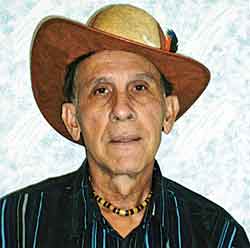August 24, 2011 issue
Arts & Entertainment
Enjoying summer festivities in Port Colborne

Bernard Heydorn
Scientific studies and news reports increasingly point to exercise as a way to extend and improve the quality of life. Dance, a form of exercise, is also being examined for its benefits. Wikipedia, for example, gives 23 references on its article – Dance and Health – and there are many more.
My wife and I as ballroom and Latin dance instructors, have seen the benefits of dance over the years - physical, social, emotional and psychological. Physically, dance as an aerobic exercise, enhances fitness, strength, endurance, flexibility and weight control.

Interestingly enough, I have put on three pounds in the last 50 years and my wife has also put on three pounds in the 40 years that I have known her! How much of that is based on genetics, diet, nutrition, and lifestyle is debatable. Suffice to say that we believe that dance has played a part.
In a study comparing professional dancers and swimmers, the dancers scored higher than the swimmers in seven out of ten areas of fitness. Studies show that dance reduces the risk of cardiovascular diseases (heart and stroke). Dance is a good exercise for heart patients compared to other aerobic activities like cycling.
Ballroom dancing reportedly helps to ward off dementia. One study indicated that Argentine tango improved the mobility of Parkinson's disease sufferers. A study of female Scottish country dancers found they were more agile, had stronger legs, and could walk more briskly than people of the same age who took part in exercises such as swimming, walking, golf and keep-fit classes.
Socially, dance is a way to meet others, in some cases leading to courtship and romance. A lot about oneself can be conveyed by a dance and not just the proverbial "two left feet". Your moves, posture, expression, hip action, freedom, creativity, confidence, style and personality are often demonstrated. A study indicated that being able to keep time (the beat) and play music is a type of intelligence. How much of this is innate and how much can be learnt is hard to say.
Dance therapy addresses emotional, cognitive, social, physical and behavioural conditions. Mental discipline and memory are involved in learning a dance or in choreography. Dance effects one's emotional and psychological well being.
Music and dance are part of the human condition. For many, dance can be as natural as breathing or walking. Others find it challenging. Overall, folks have a feeling of release and happiness after dancing – any kind of dancing. Dancing is an activity that can be engaged in at virtually any age. It does not take too much to "shake a leg". One does not necessarily need a partner to dance.
Anecdotal reports of the health benefits of dance have existed for many years. Now countries like England are engaging in national studies on the relationship of dance to heath. In years gone by, dance was part of the school curriculum in elementary and secondary schools as part of health and physical education. Perhaps we may see a return to that state of affairs. Reports of obesity among children and adults in North America and other places are startling.
Dance may cause some distress and disagreement among participants and in some cases even injury. The general rule is that you know your body best and safety first. Make dance a fun activity, not work – just a pleasurable distraction from work - in other words, a de-stressor.
Some doctors are prescribing dance exercises for patients. You don't have to be a professional dancer to enjoy dancing. What you do need is the desire and motivation to increase the health and happiness of yourself and those around you. Once you get engaged in dance, you might become "hooked" as some of our dance students have learnt.
News reports indicated recently that 15 minutes of exercise daily could increase your life by three years. Just think how many years you could possibly add to your life by enrolling in a dance class and the friends you would make along the way! If the creeks don't rise and the sun still shines Ill be talking to you.